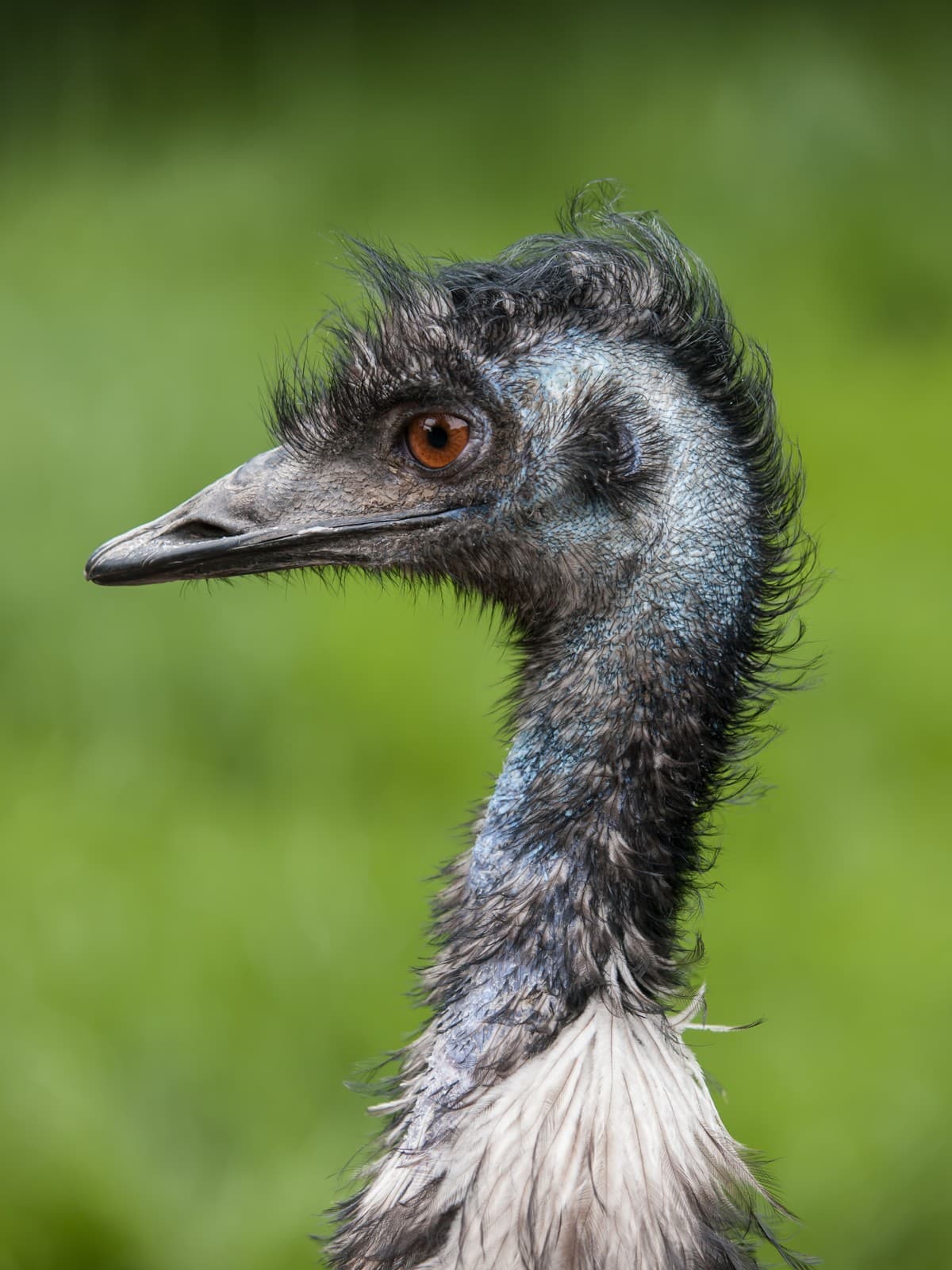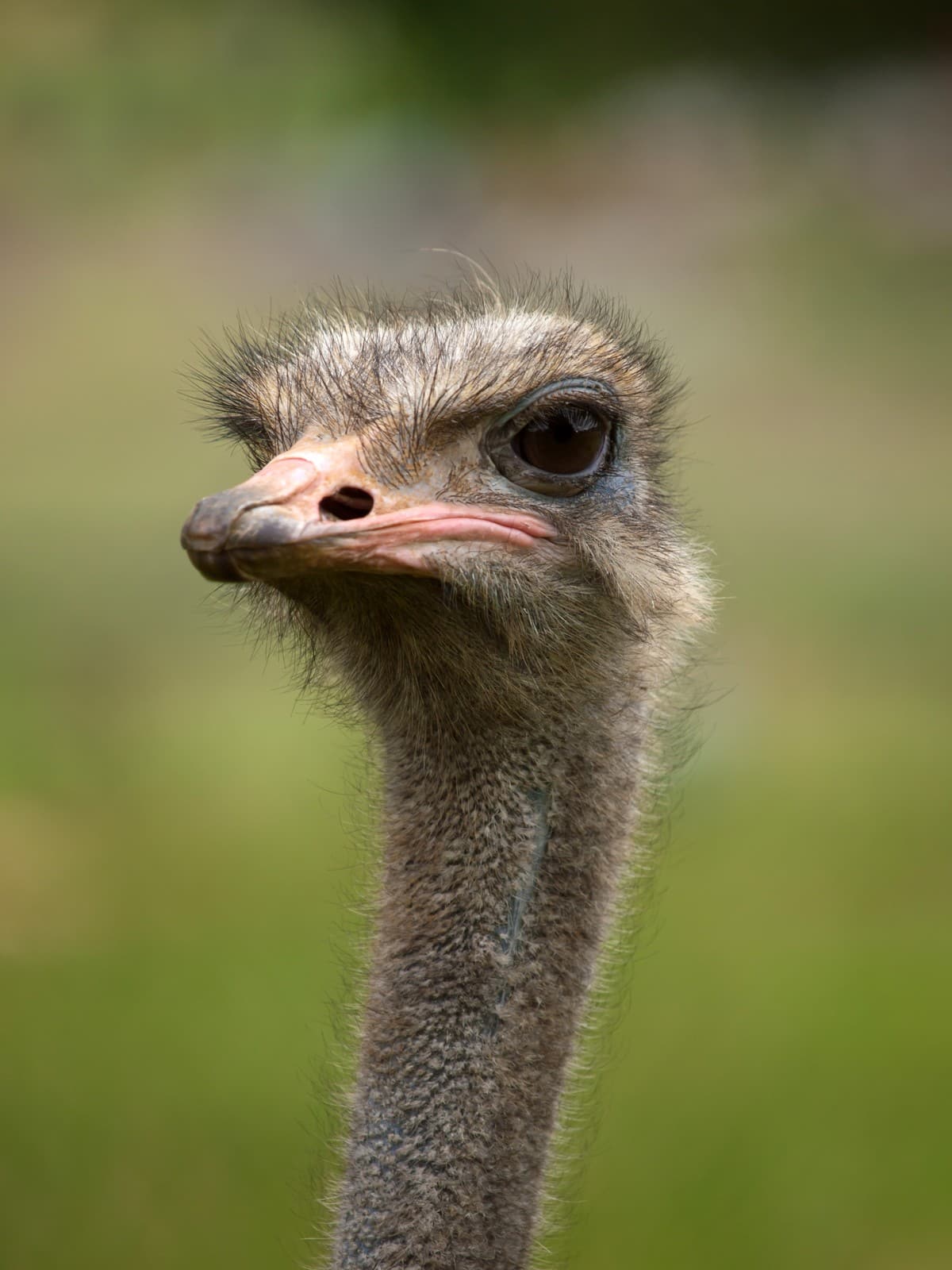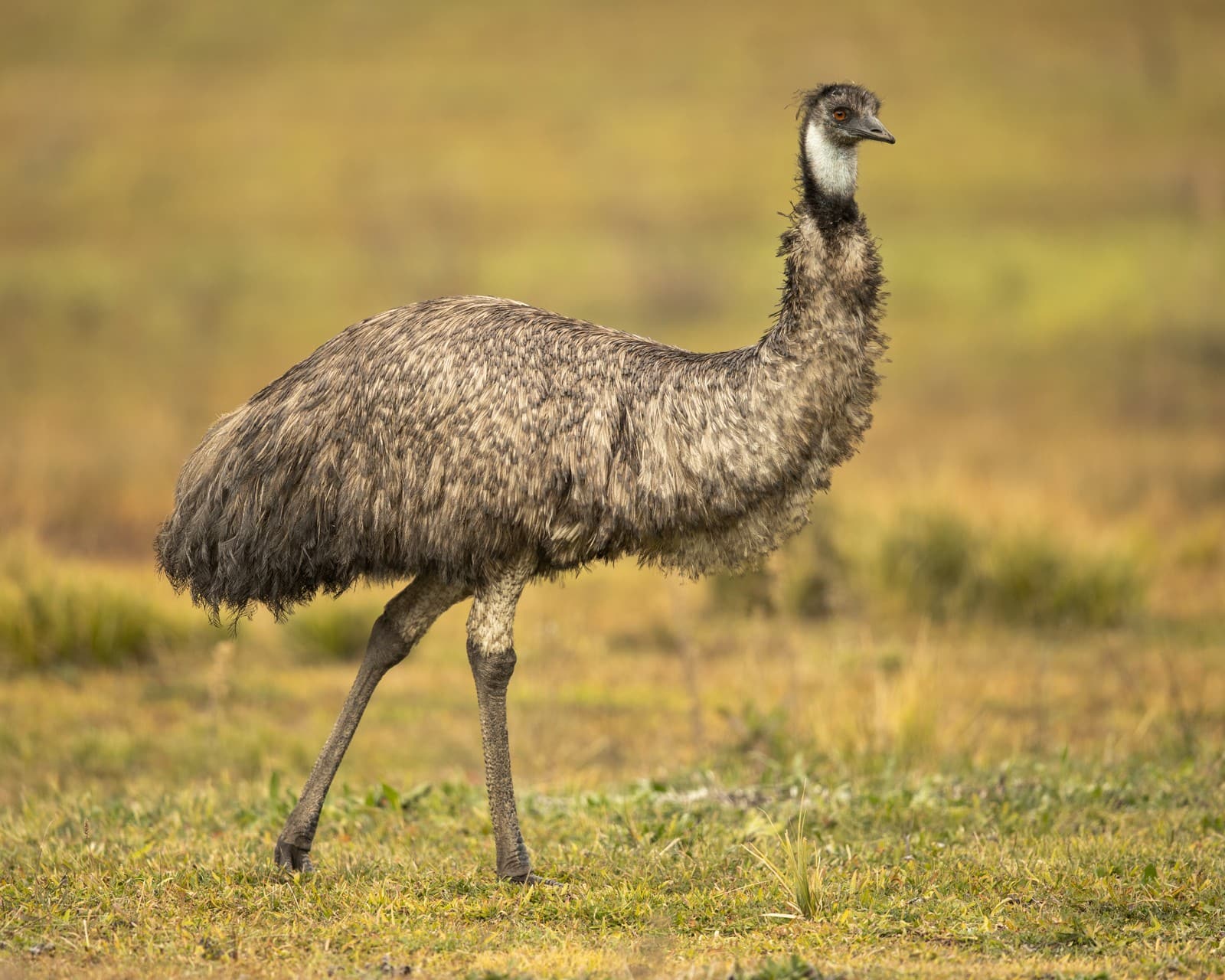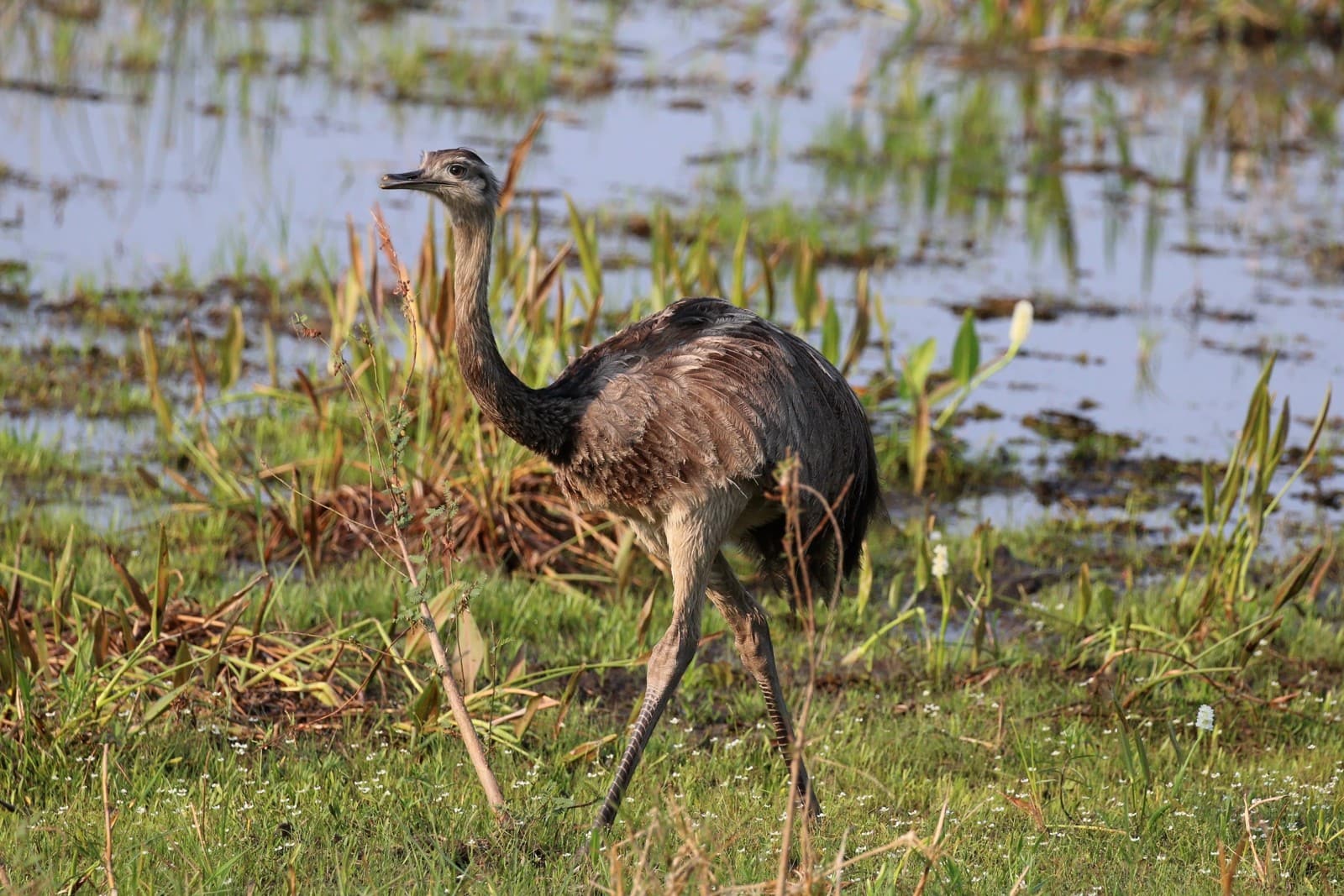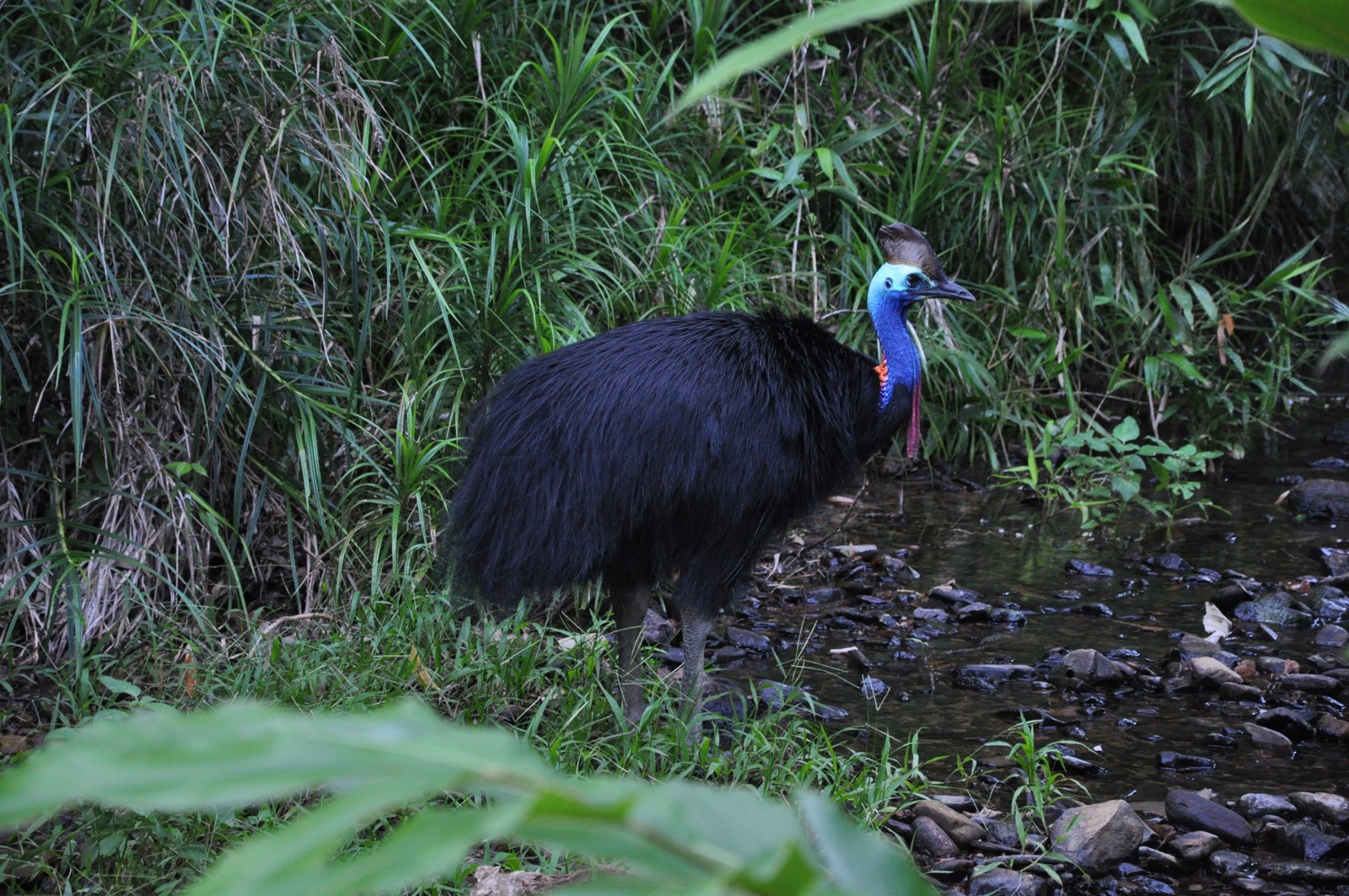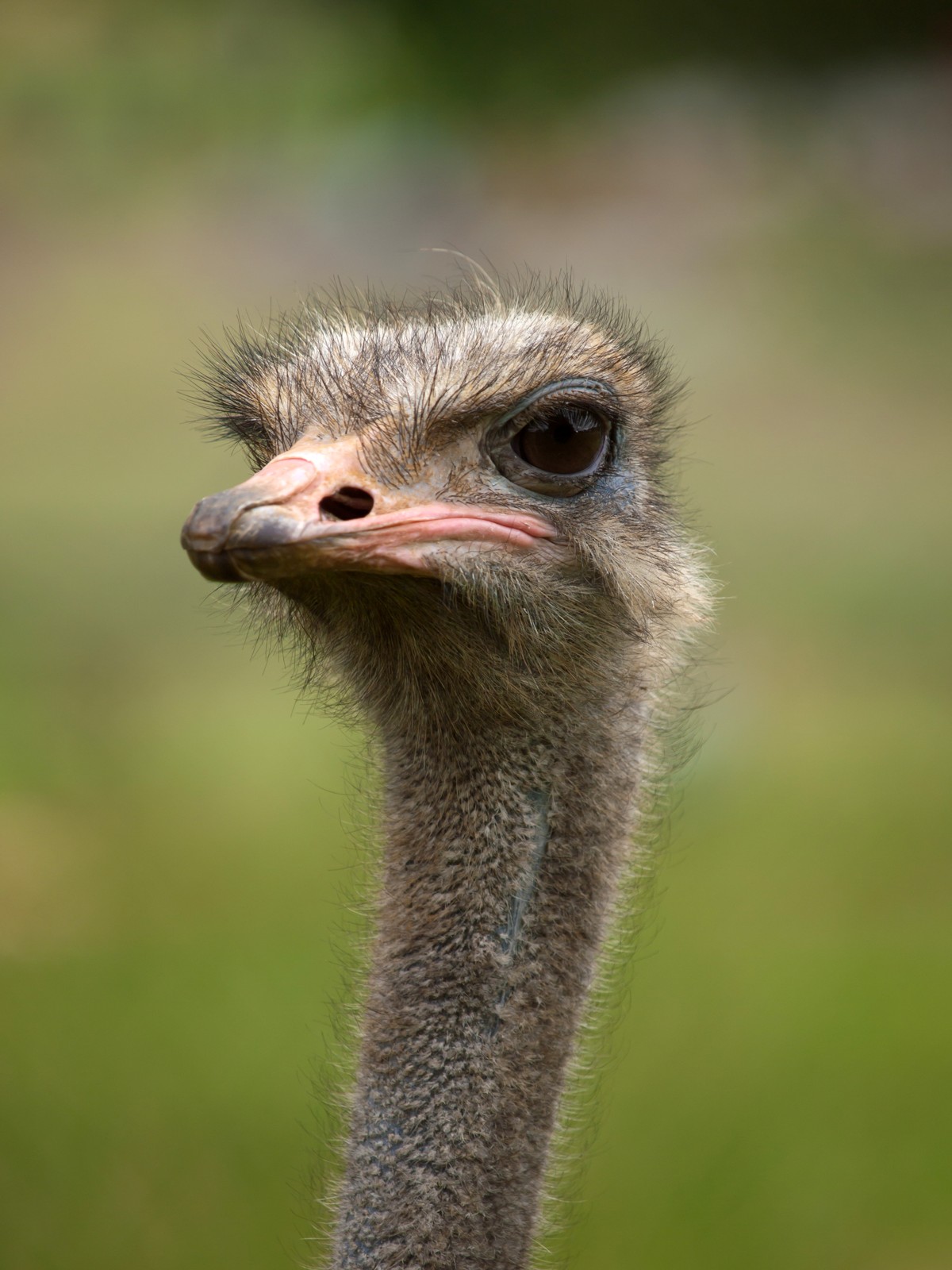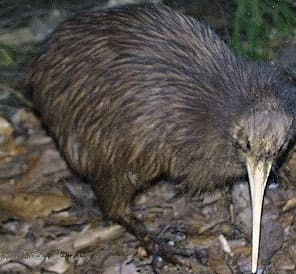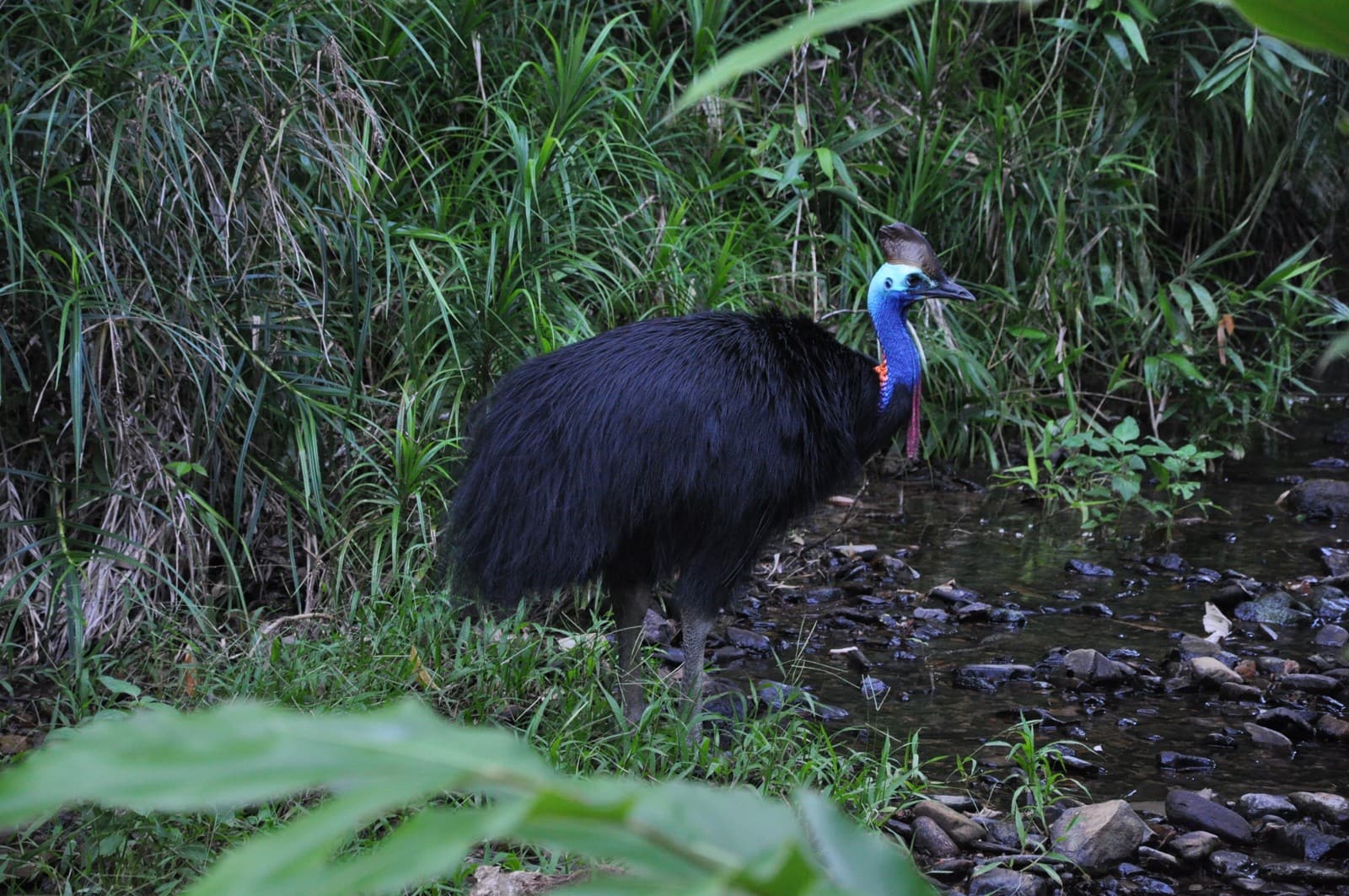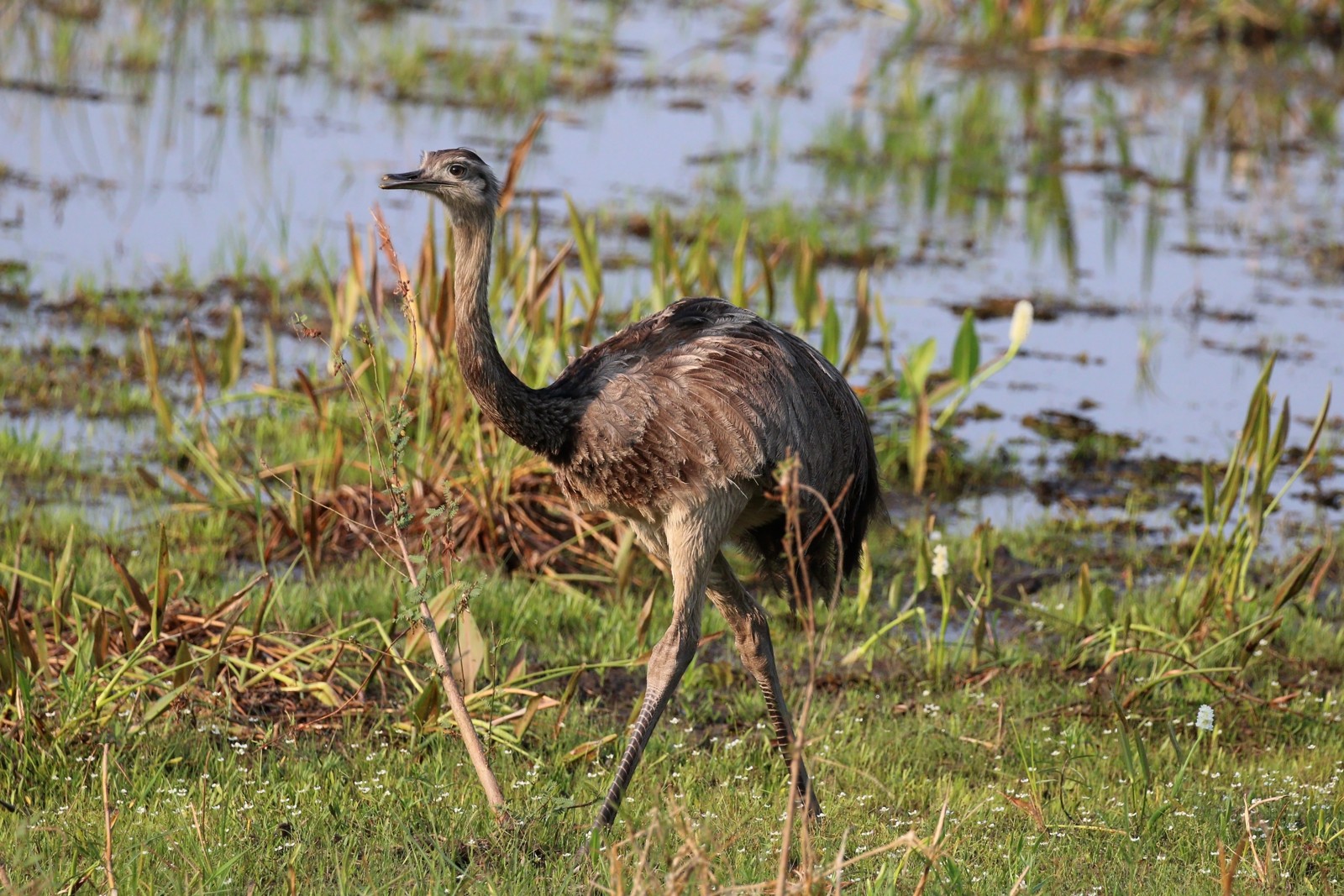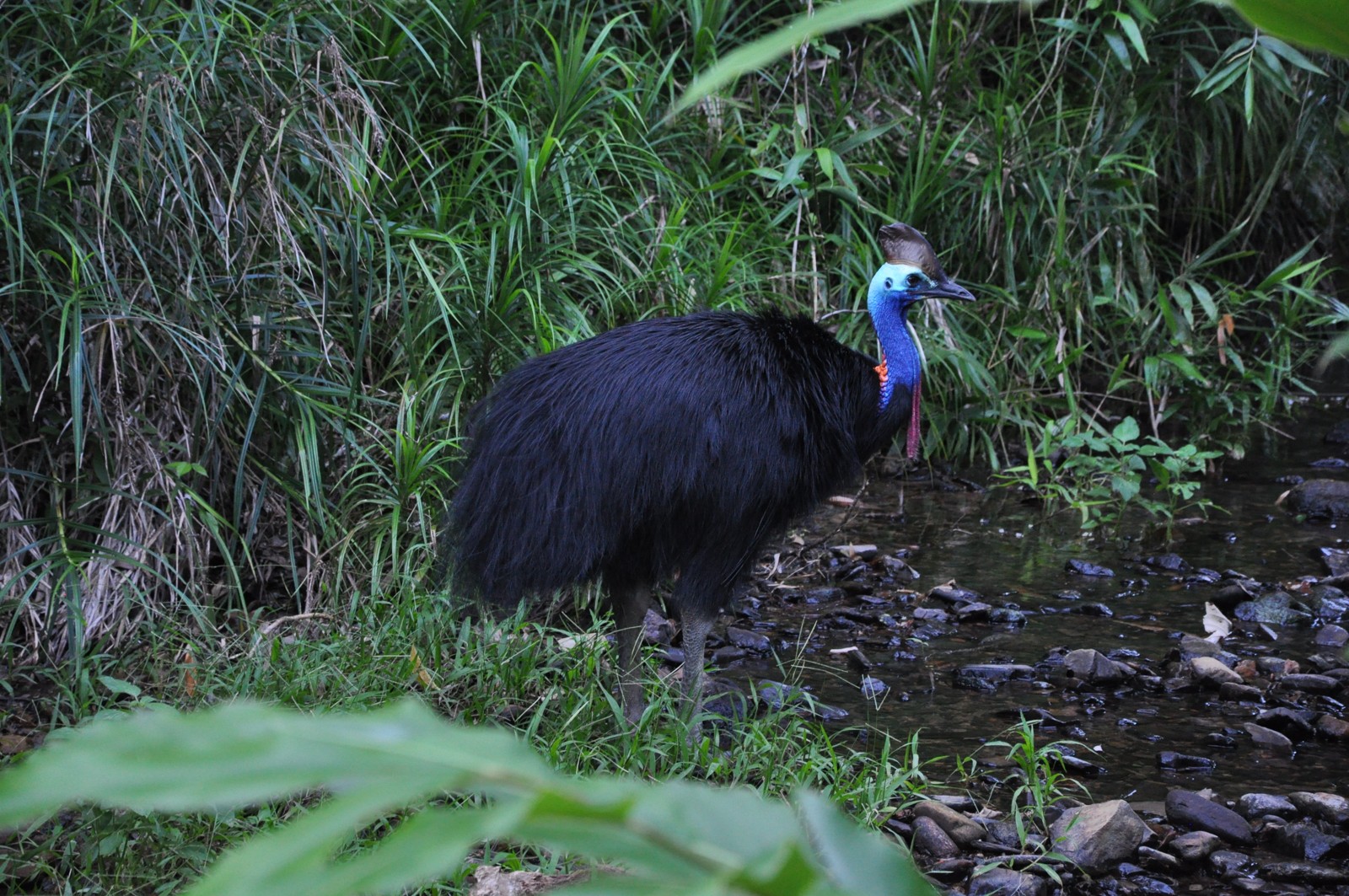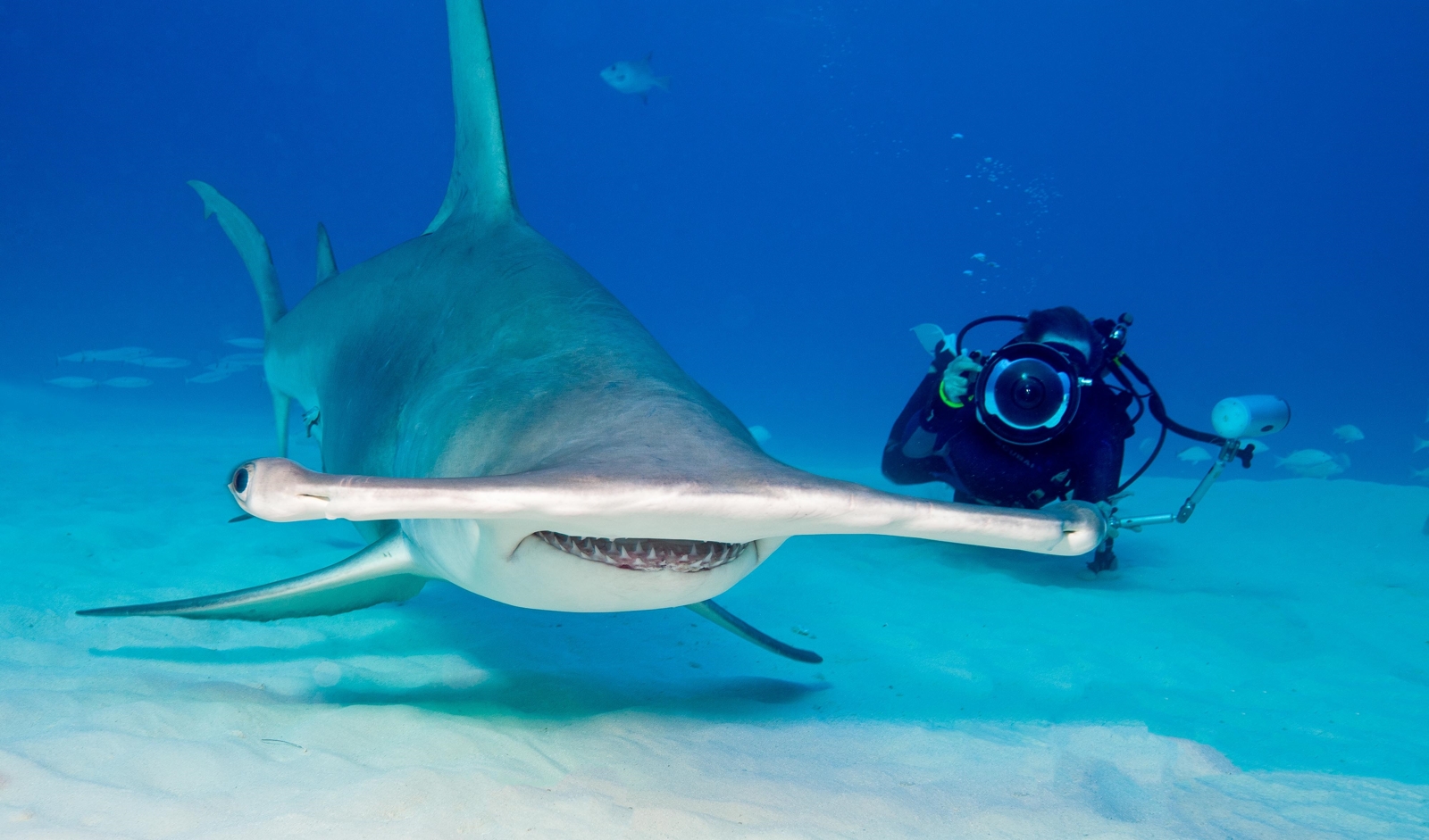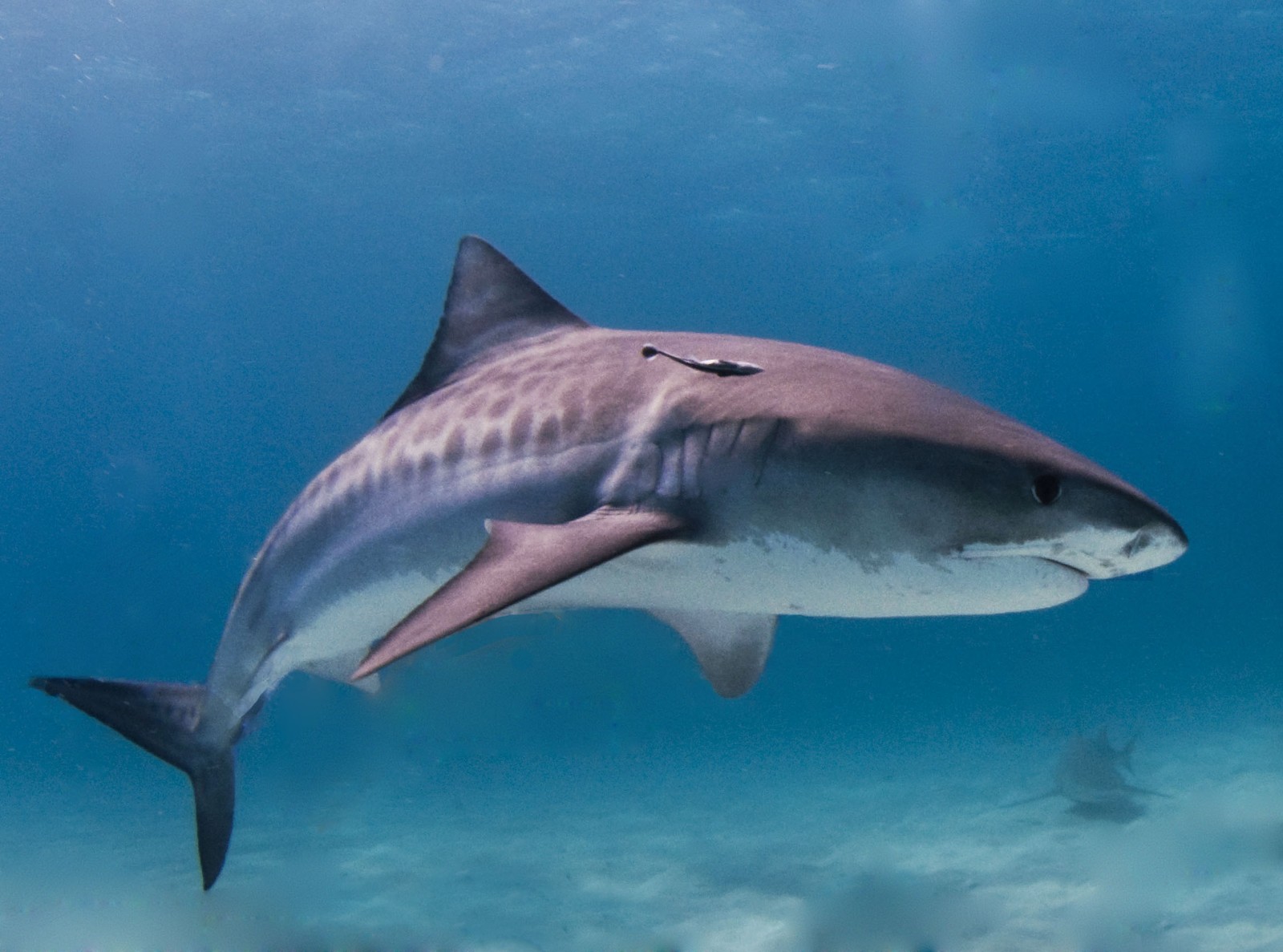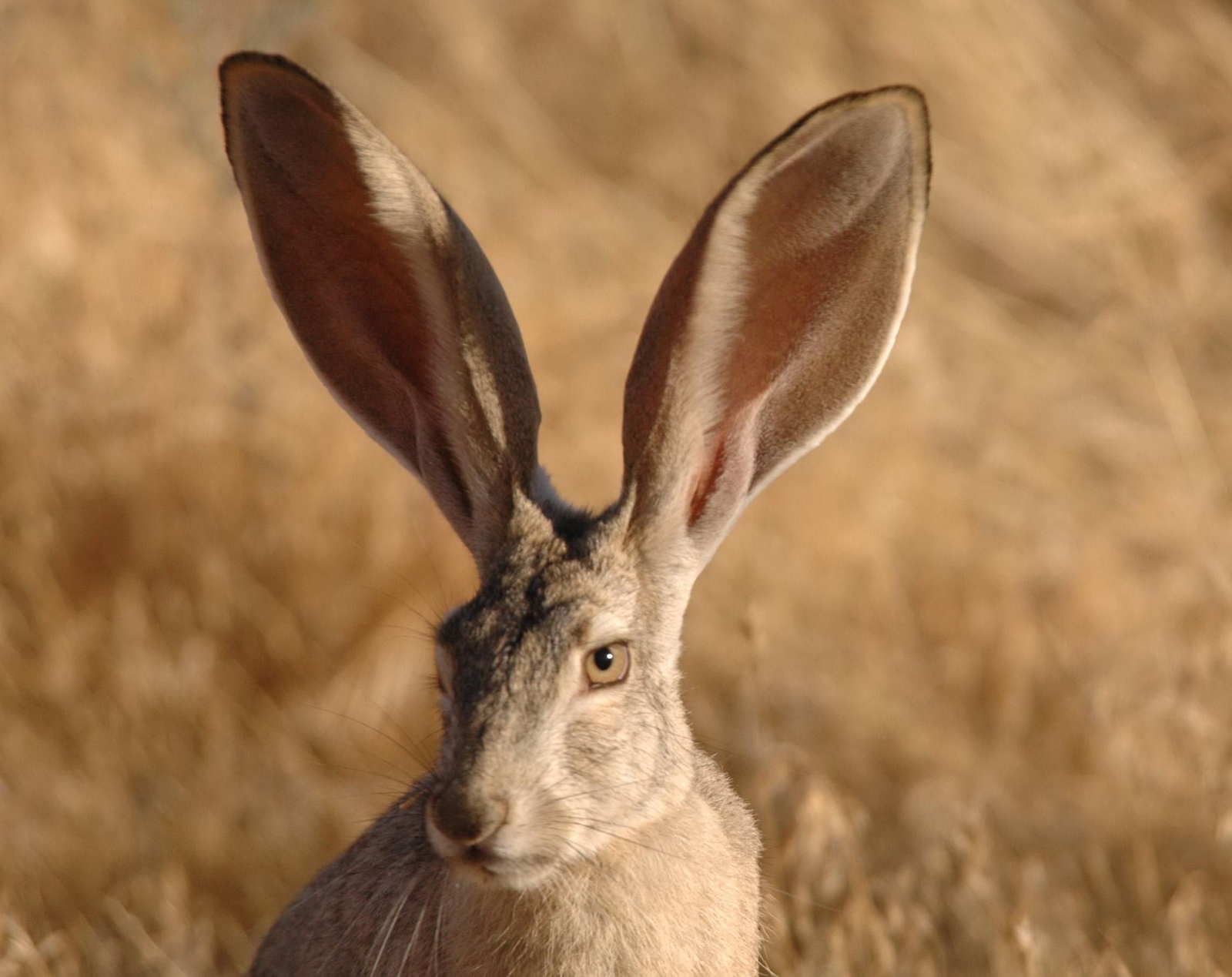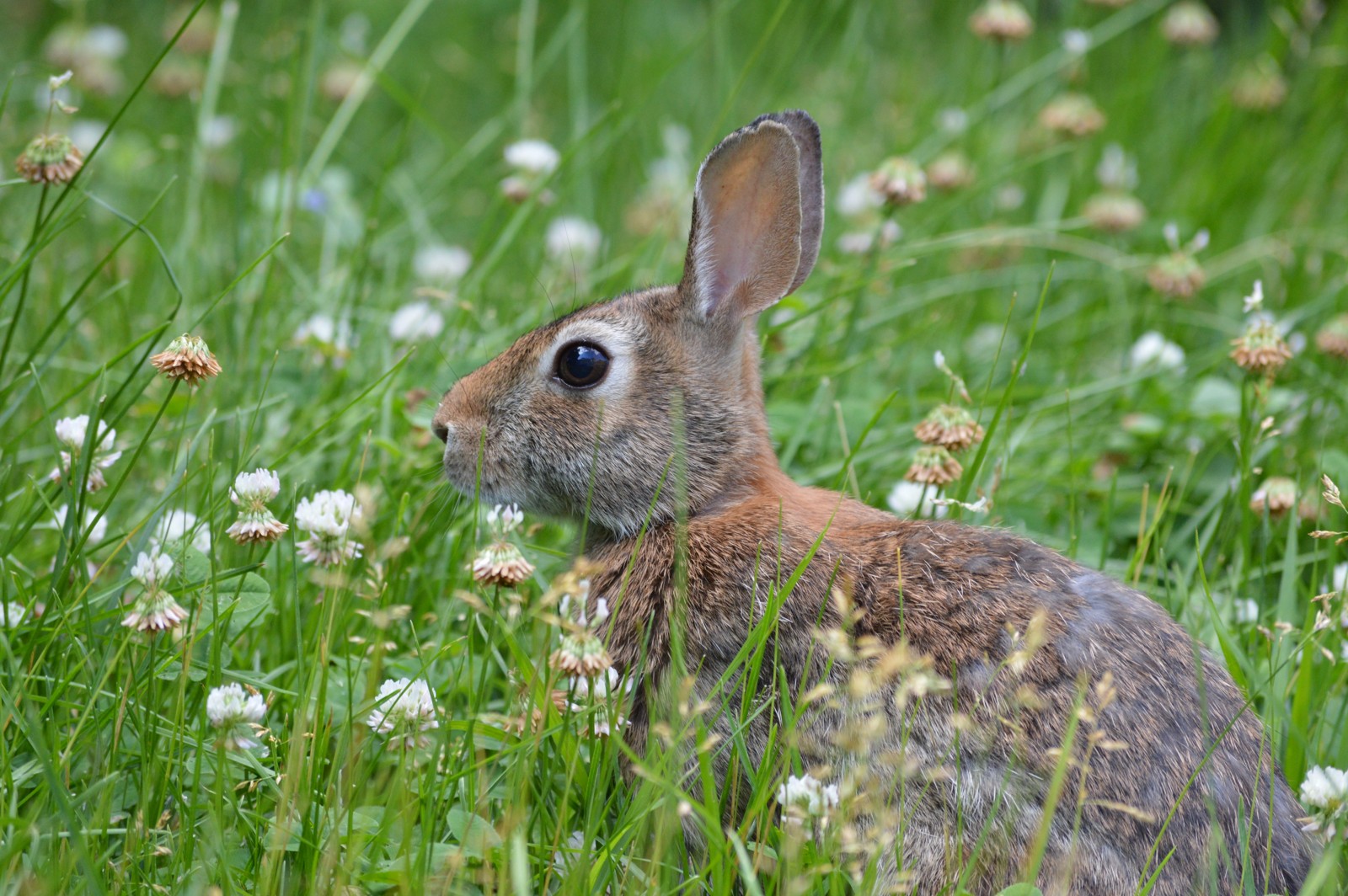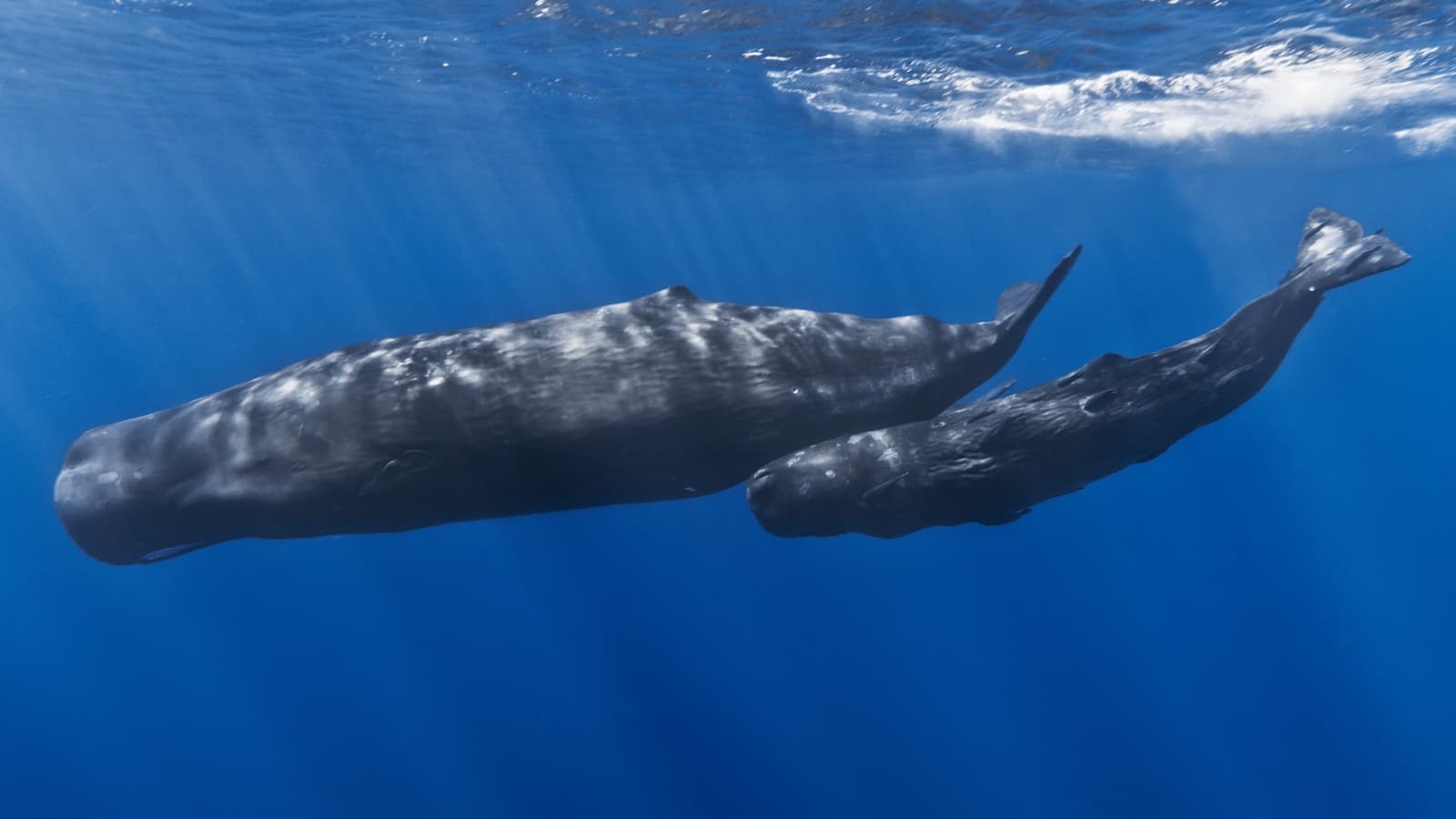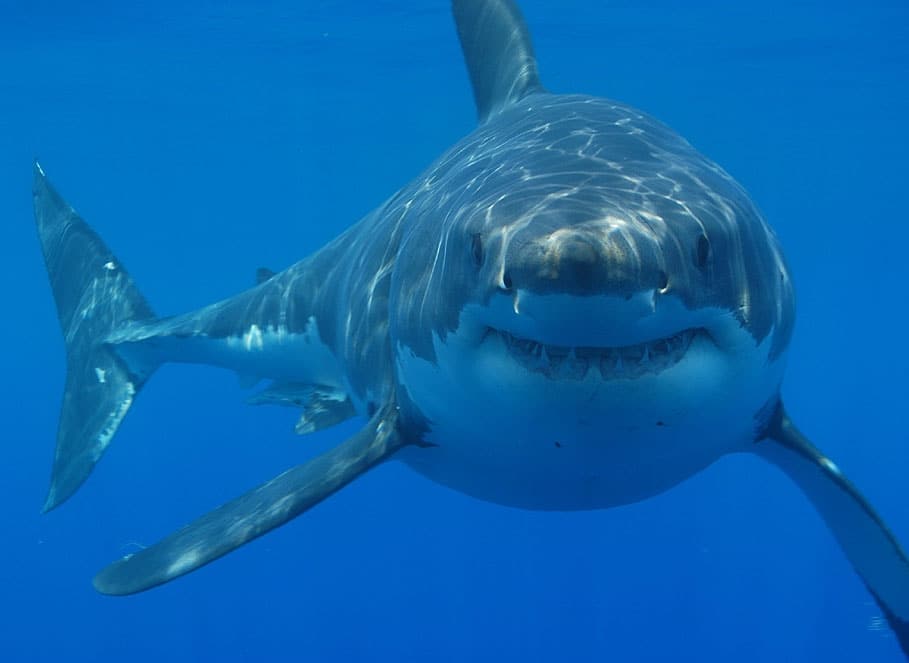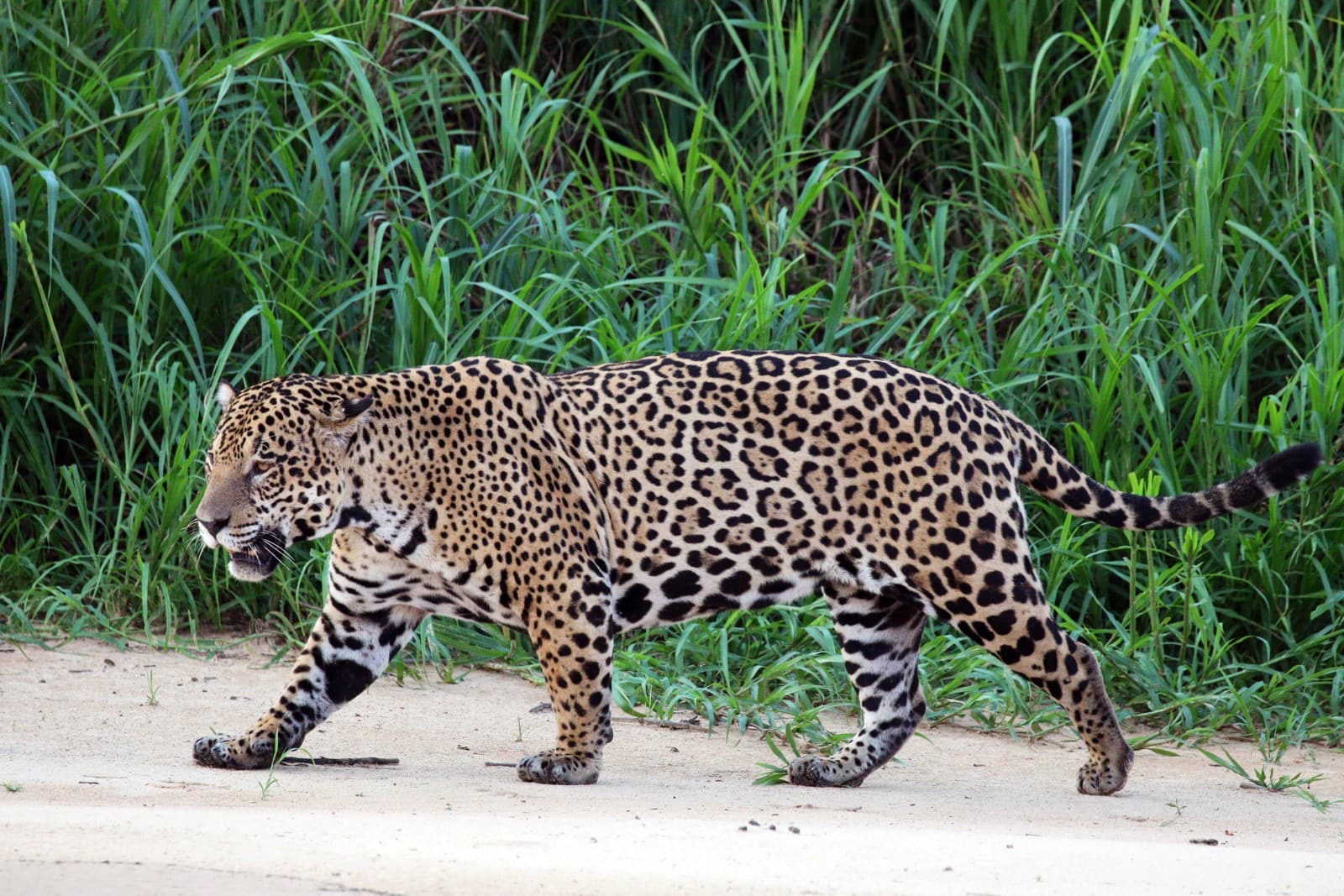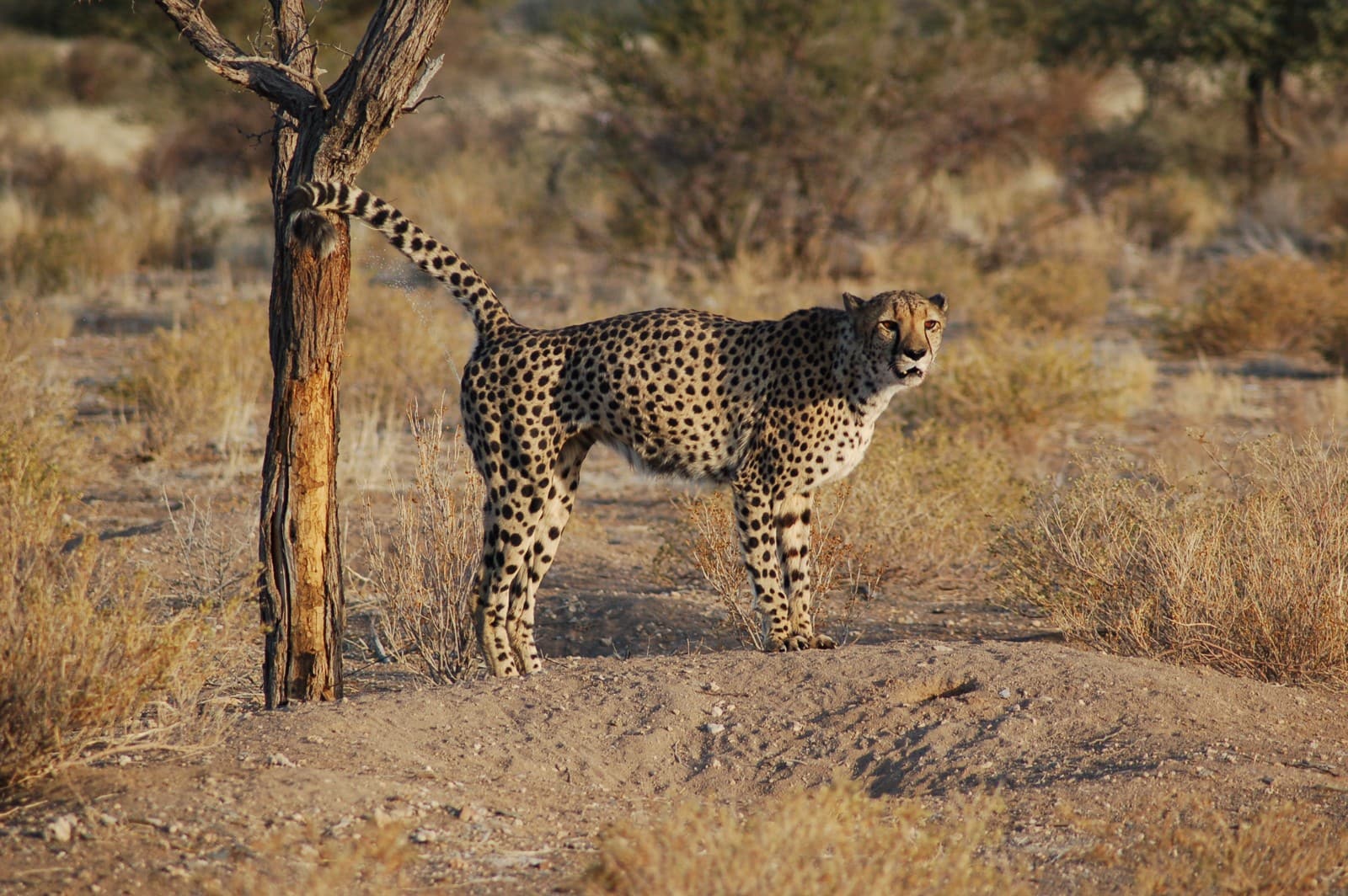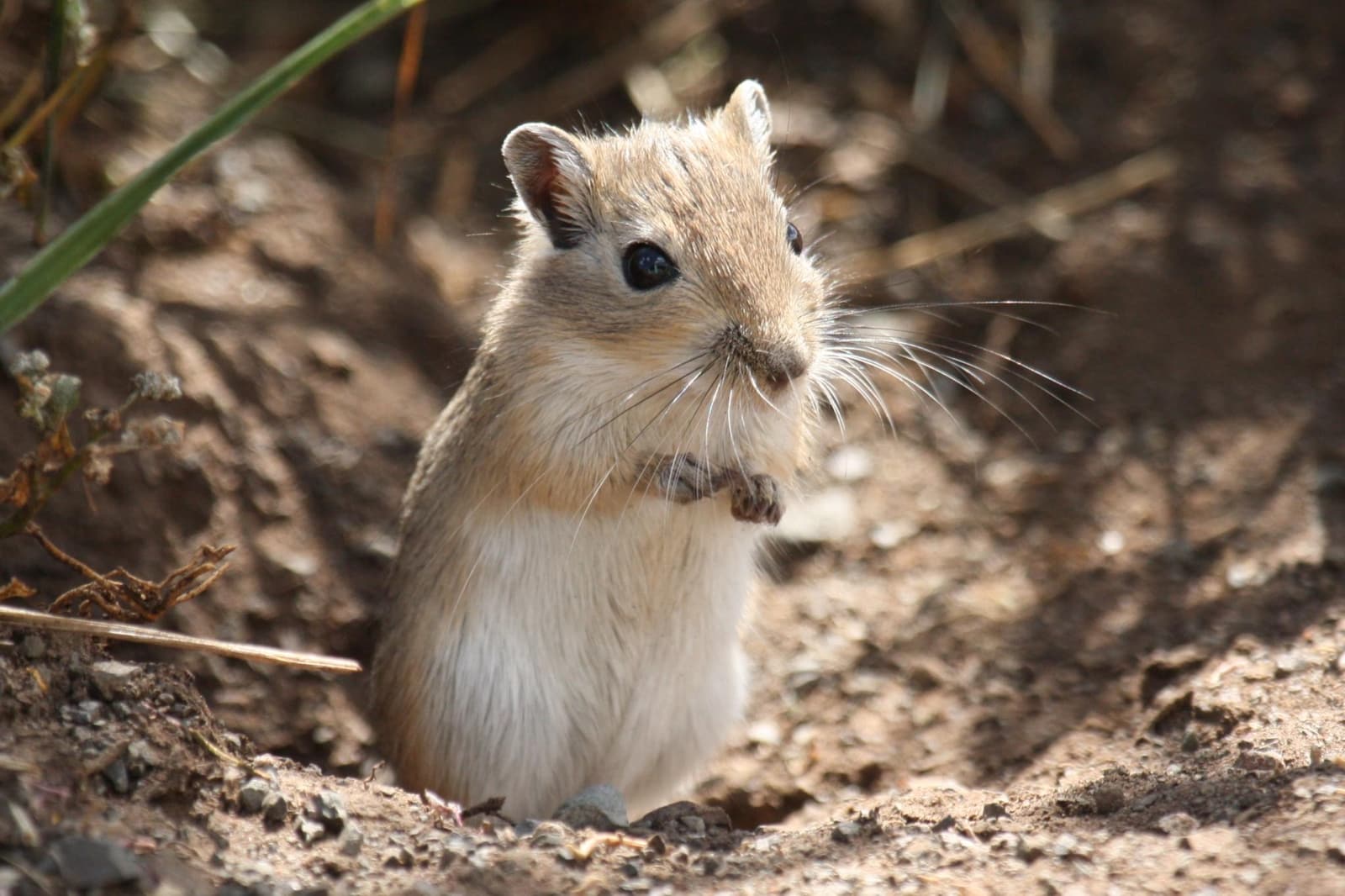Emu vs Cassowary: A Complete Comparison
When comparing the Emu vs Cassowary, these remarkable ratites showcase fascinating differences despite their shared Australian heritage. The Emu stands as Australia’s tallest native bird at up to 6.2 feet (1.9 meters), while the Southern Cassowary, though shorter at 5.8 feet (1.75 meters), claims the title of heaviest bird in Australia, weighing up to 130 pounds (59 kg).
These prehistoric-looking birds diverged millions of years ago, developing distinct adaptations for their respective habitats. While Emus thrive in Australia’s arid inland regions, Cassowaries have evolved as rainforest specialists, developing unique features like their distinctive casque and vibrant blue neck coloring.
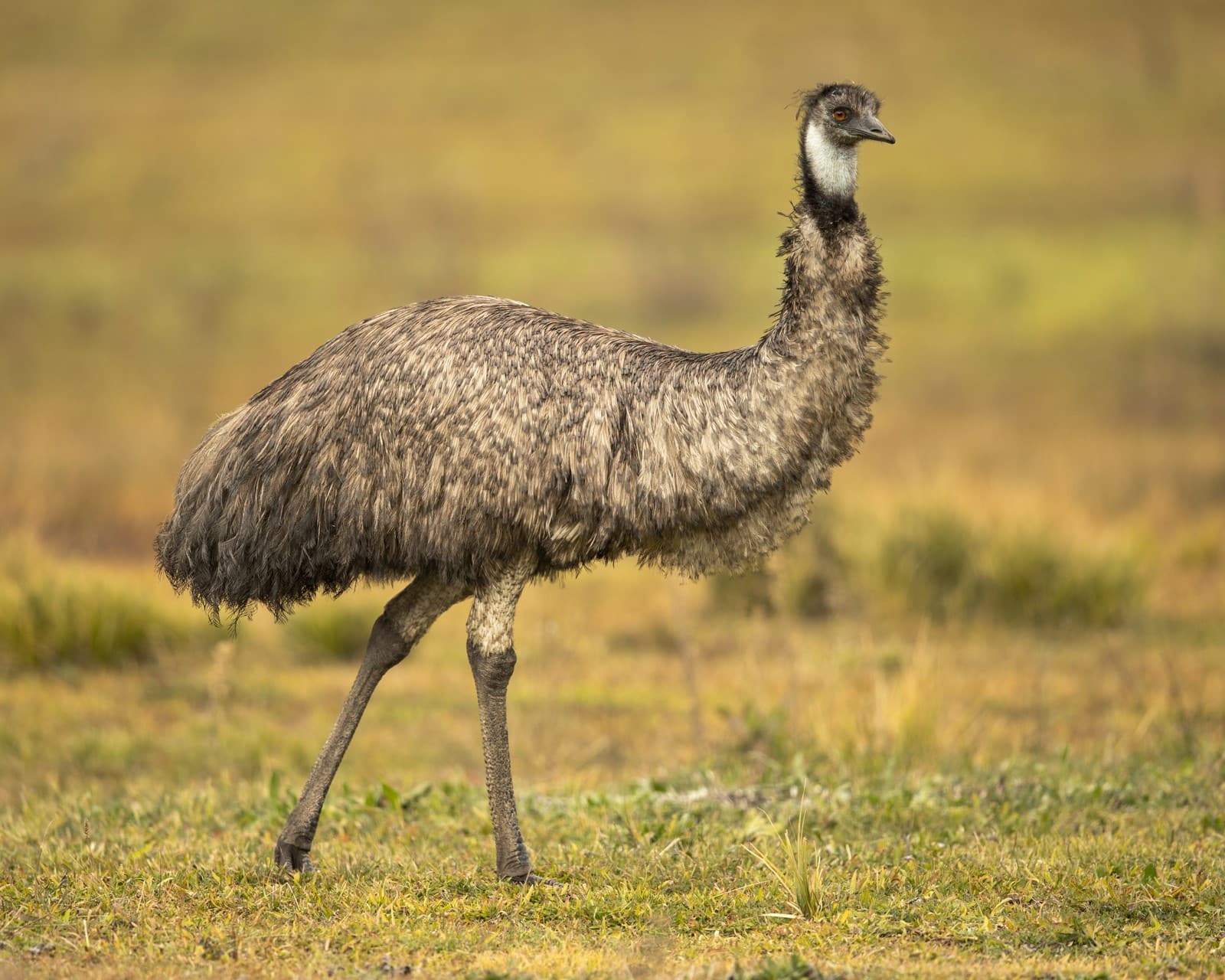
© JJ Harrison (https://www.jjharrison.com.au/) / CC BY-SA 4.0
The Emu’s distinctive shaggy plumage and adaptable nature make it perfectly suited for life in Australia’s varied grasslands and woodlands, where it can travel vast distances in search of food and water.
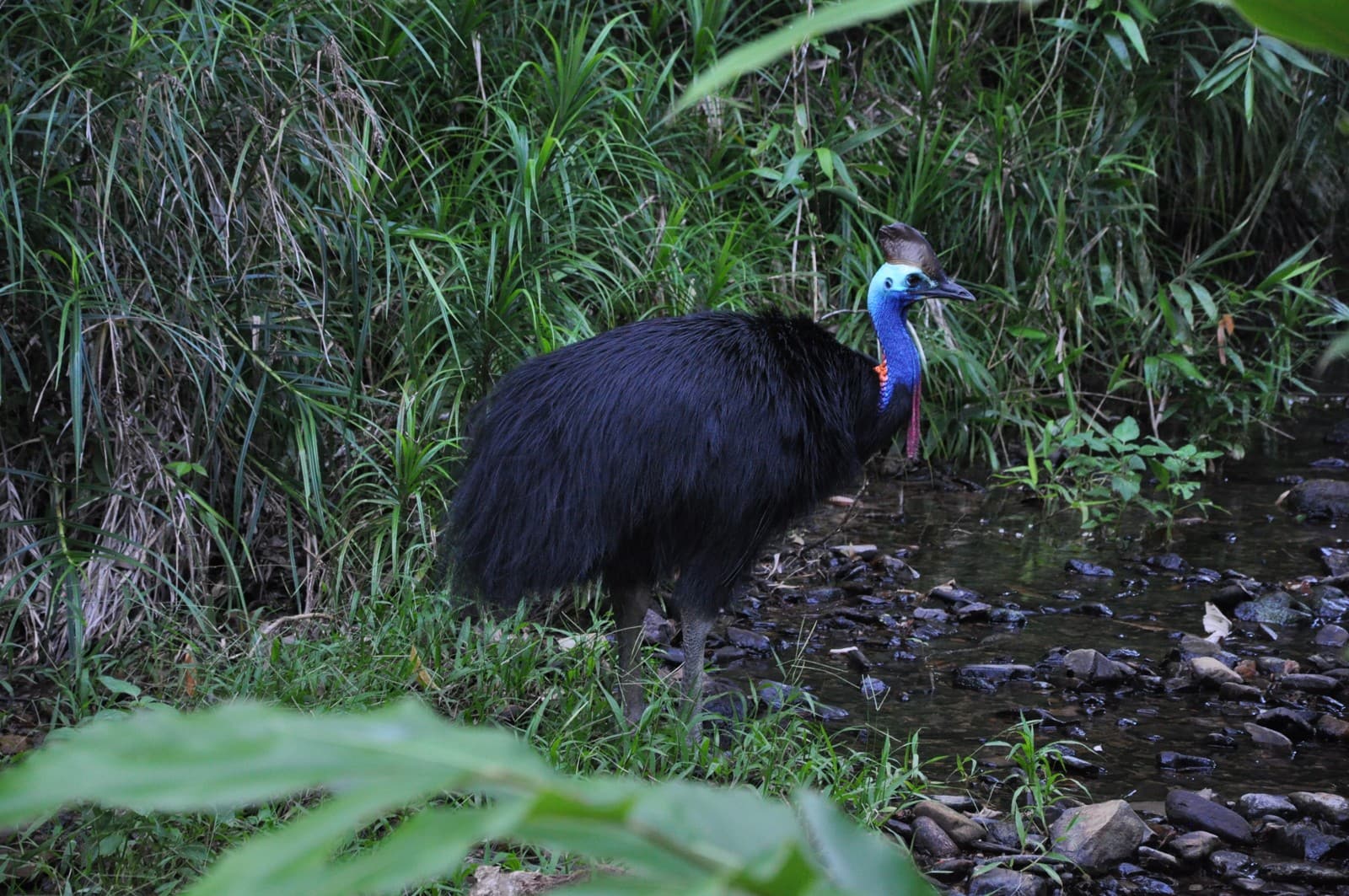
© Dmitry Brant / CC BY-SA 4.0
The Southern Cassowary’s striking appearance, with its brilliant blue neck and imposing casque, reflects its evolution as a rainforest dwelling species, where these features play crucial roles in communication and navigation through dense vegetation.
Key Differences: Emu vs Cassowary
| Feature | Emu | Cassowary |
|---|---|---|
| Height | 5.2-6.2 ft (1.6-1.9 m) | 4.9-5.8 ft (1.5-1.75 m) |
| Weight | 66-100 lbs (30-45 kg) | 75-130 lbs (34-59 kg) |
| Habitat | Grasslands, woodlands, plains | Tropical rainforests |
| Plumage | Shaggy, brown-grey | Glossy black, stiff |
| Head Features | None | Large casque, wattles |
| Diet | Omnivorous, mainly plants and insects | Primarily frugivorous |
Habitat and Distribution
The Emu and Cassowary have evolved for distinctly different Australian environments. Emus range across most of mainland Australia, adapting to various semi-arid regions and open woodlands. They can travel long distances, often following rainfall patterns and food availability.
Cassowaries, conversely, are restricted to the tropical rainforests of northeastern Australia and New Guinea. These solitary birds require dense forest habitat with abundant fruit-bearing trees, making them particularly vulnerable to habitat fragmentation.
Behavior and Social Structure
Emu Social Behavior
- Form loose social groups outside breeding season
- Males incubate eggs and raise chicks alone
- Can travel long distances in search of food
- Generally peaceful unless threatened
Cassowary Social Behavior
- Strictly solitary except during mating
- Females may defend territories
- Highly territorial and protective of feeding areas
- Known for being more aggressive when encountered
Who Would Win in a Confrontation?
While both species are powerful and capable of defending themselves, the Cassowary is generally considered more dangerous in confrontations. Their powerful legs are equipped with a 4-inch (10 cm) dagger-like claw on each inner toe, which they can use with devastating effect. However, such confrontations would never occur naturally as these species occupy different habitats.
Conservation Status and Threats
The Emu population remains stable with an estimated 625,000-725,000 birds in the wild, classified as Least Concern. Cassowaries face more significant challenges, with the Southern Cassowary listed as Vulnerable. Current estimates suggest fewer than 20,000 mature individuals remain in the wild.
Major threats include:
- Habitat loss and fragmentation
- Vehicle strikes
- Dog attacks
- Climate change impacts
Diet and Feeding Habits
Emus are opportunistic omnivores, consuming:
- Seeds and fruits
- Insects and small vertebrates
- Native and cultivated plants
- Green vegetation when available
Cassowaries are primarily frugivorous, specializing in:
- Fallen rainforest fruits
- Small vertebrates occasionally
- Over 238 species of native fruits
- Critical role in seed dispersal
Both species play vital roles in their respective ecosystems, though their feeding strategies reflect their distinct evolutionary paths and habitat preferences.
